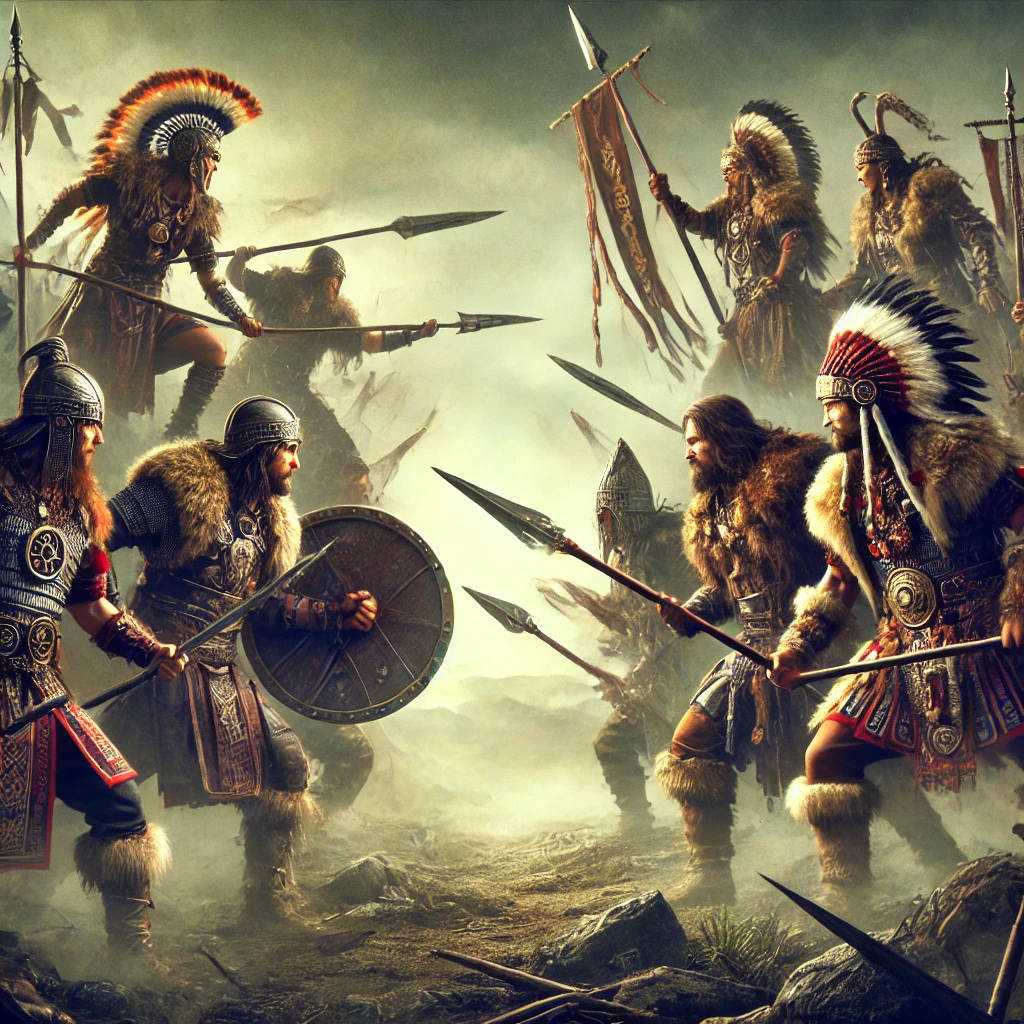We like to think of ourselves as rational beings, adept at evolving beyond our primal instincts, but the truth is that human nature—whether we care to admit it or not—has its roots in a tribal mindset that persists to this day. We’re born into this world with a brain that has been fine-tuned by millennia of evolution, a brain that is wired to see “us” versus “them.” This tribal wiring is the real cause behind the prejudice and racism we fight today. It’s uncomfortable, but it’s a truth we must face head-on if we’re to move forward as a truly inclusive society.
Nelson Mandela once famously said, “No one is born hating another person because of the color of his skin, or his background, or his religion. People must learn to hate, and if they can learn to hate, they can be taught to love, for love comes more naturally to the human heart than its opposite.” While I hold Mandela’s legacy in the highest regard, this quote gets it wrong from a biological standpoint. It’s true that we can learn to love just as easily—or perhaps easier—than we can learn to hate, but it’s important to note that we’re also born with the neuropsychology infrastructure for hatred and division. We are genetically predisposed to see “other” in ways that aren’t always pleasant or fair.
Racism, at its core, is ignorance. It’s not just a result of upbringing or environment—though those factors certainly play a massive role—it’s deeply embedded in our evolutionary history. Our brains have evolved sophisticated social recognition mechanisms designed to help us distinguish between our kin and others, those outside our close-knit groups. This ability to identify who belongs in our “in-group” and who doesn’t once helped our ancestors survive in a world where other human groups often threatened our group’s survival. This isn’t some abstract theory. It’s a well-documented biological reality that we carry with us into modern life in nearly everything we do.
Ever heard someone say, “All Asians look alike” or “All white people look alike”? These comments are rooted in the cross-race effect, a well-known phenomenon in psychology. Essentially, it’s a manifestation of our evolutionary wiring at play. Our brains are much better at recognizing and differentiating between faces of those in our own group than they are with those from outside our tribe. The brain area responsible for this, the face fusiform gyrus, shows heightened activity when recognizing familiar faces, which makes distinguishing between faces from another race or ethnicity more challenging. It’s not a conscious choice—it’s the brain doing what it’s evolved to do: recognize those who are similar and separate them from those who are different.
But we need to move beyond just identifying the problem. The real challenge is understanding the why behind this hardwiring and what we can do to correct it. Recognizing our predispositions is the first step, but the second—and far more difficult step—is dismantling them.
Now, let’s layer this issue with a deeper evolutionary concept known as multilevel selection. Multilevel selection theory posits that natural selection operates not only at the level of the individual but also at the level of groups. In our evolutionary past, humans lived in small tribes or bands, and the survival of these groups often depended on cooperation and mutual protection. A crucial part of this was being able to quickly identify who belonged to the group and who didn’t. Those outside the group—especially rival tribes—were perceived as threats, competing for resources, land, and survival.
This mechanism, though useful for protecting the tribe, also laid the groundwork for the biases and prejudices we see today. When humans evolved to be highly social creatures, their survival depended on the cohesion of their group. This meant that tribal affiliation was essential, and those outside the tribe were often perceived as a threat to that cohesion. This tendency to favor one’s own group over outsiders—what we call in-group favoritism—was naturally selected over time because it helped groups fend off external threats. Groups that cooperated and identified with each other were more likely to survive and reproduce, passing on their ability to discern their own from others.
The problem arose when the tribal mentality, a survival mechanism in small, isolated groups, was carried into larger, more complex societies. Instead of adapting to the modern world, these ancient biases are often triggered in environments where they no longer serve a protective function. Multilevel selection helps explain why we’re wired to prefer those who look like us, because our evolutionary ancestors had no need to appreciate diversity when their survival depended on warding off those who were different.
Racism is often blamed on cultural or societal influences, but the reality is that both genetics and environment shape our behavior. This isn’t a matter of “nature versus nurture”—that old, outdated, false dichotomy. It’s both. It’s always been both. As humans, we’re products of a complex interplay between our evolutionary history and the environments we inhabit. Our genes give us the capacity for prejudice, but our surroundings, our experiences, and our culture can either exacerbate or mitigate those biases.
Take, for example, the way we develop our understanding of race. If you’re raised in an environment where differences are celebrated, where people are taught from a young age to view others as equals, you’re likely to have a very different view of racial diversity than someone raised in an environment where segregation and exclusion are the norm. But even then, the neural systems that predispose us to favor people who look like us are still active in the background, waiting for the right environmental cues to trigger them.
Consider the evolutionary pressures faced by our ancestors. For nearly 100,000 years, humans lived in small, tight-knit groups. They had to be able to quickly identify friend from foe, kin from stranger. The groups that survived were those that could maintain tight social bonds and defend against threats from other groups. It was survival of the fittest—but in a way that favored groups over individuals. If your tribe couldn’t distinguish between you and the other tribe, your chances of survival went down. This is why we have such strong tendencies to favor those who look like us—it was essential for survival in prehistoric times.
But here’s the catch: this “us vs. them” mentality is outdated. We no longer live in a world where the biggest threat to our survival is another tribe coming over the hill. We’re all mixed together now, inhabiting the same planet. And while that doesn’t change the fact that we’re biologically predisposed to tribalism, it does mean that our evolutionary wiring needs to be reprogrammed. The key is not to pretend that these biases don’t exist but to actively fight against them.
The truth is that unlearning racism isn’t easy. It’s a lot harder than just blindly accepting what our brains tell us. It requires conscious effort, empathy, and the ability to step outside of our own narrow worldview. Being racist is, in many ways, the easy route, hence why it’s positively correlated with ignorance. It doesn’t take much mental effort to fall into the trap of stereotyping or generalizing. But becoming anti-racist? That takes work. It takes a lot of work. It takes understanding, empathy, and a willingness to confront the uncomfortable truths about ourselves and our history.
As behavioral neuroscientist Robert Sapolsky notes in Behave: The Biology of Humans at Our Best and Worst, the brain’s tendency to favor the familiar isn’t something we can just wish away. But what we can do is engage with it critically. We can push back against our innate biases by expanding our circles, learning about others, and actively questioning our assumptions. It’s not easy, but it’s the only way forward.
Finally, it’s important to remember that while racism has deep biological roots, it is ultimately a social construct. The idea of race itself is a man-made division—one that holds little weight in biological terms. Humans are incredibly similar genetically, and our differences are superficial at best. But these social constructs have real-world consequences. They shape our institutions, our policies, and our interactions with others. The sooner we realize that the concept of race is a social invention, the sooner we can begin dismantling the systems that perpetuate racial inequality.
We are all connected. Our fates are intertwined, and the divisions we’ve built between ourselves are artificial. The path to a truly multilevel egalitarian society doesn’t lie in pretending racism doesn’t exist, but in acknowledging it, understanding its roots, and actively working to create a world where every person is valued for who they are—not the color of their skin or their ethnic background.
We’ve got a long (red) road ahead, but we’re on the right path. The first step is recognizing that we are all, in one way or another, a little racist. The second step is unlearning it, and that’s where the real work begins. The third and final step is reworking our social systems to reflect a more inclusive, multilevel view of humanity that is devoid of racial constraints or social divisions—for that, see Part II.
(This is Part I of a two-part article. You can find Part II here: “Everybody is Born a Little Racist: Evolving Beyond Tribalism to Build a Truly Multilevel Egalitarian Society“)


1 comment
[…] but are reminiscent of our evolutionary histories. As discussed in Part I of this series “Everybody is Born a Little Racist”, our ancestors’ survival often depended on close-knit group cooperation and a cautious, even […]
Comments are closed.